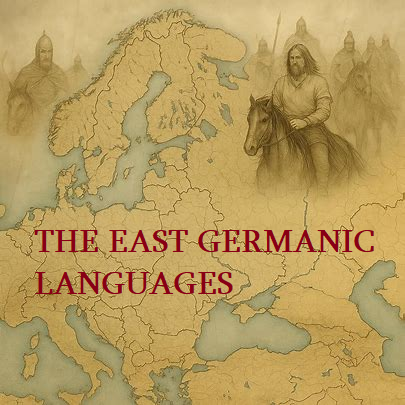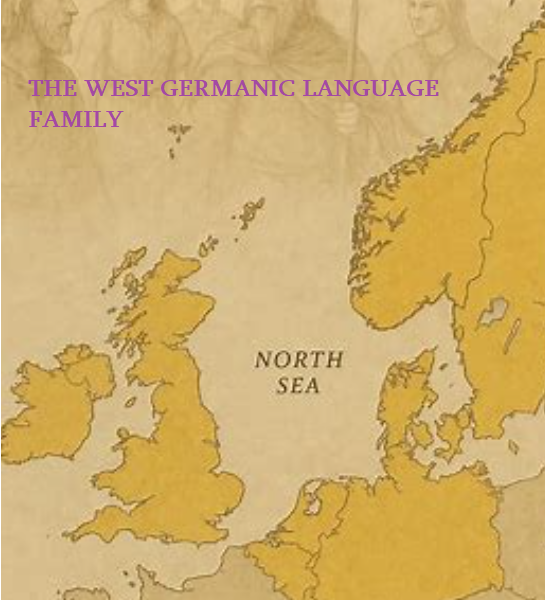Introduction
The West Germanic language family forms one of the three principal branches of the Germanic language tree, alongside North and East Germanic. Its members today include English, German, Dutch, Afrikaans, and Frisian, encompassing hundreds of millions of speakers worldwide. Originating from Proto-Germanic, the West Germanic branch developed distinct phonological, morphological, and lexical innovations that distinguish it from its sister branches.
While the East Germanic languages, such as Gothic, eventually became extinct, and the North Germanic languages evolved into the Scandinavian languages, the West Germanic family remained both diverse and influential. Its study provides crucial insight into the processes of linguistic evolution, including sound shifts, morphological simplification, and the impact of migration and cultural contact.
For broader context, see The Germanic Language Family and Proto-Germanic: The Ancestral Language of English, German, and the Norse Tongues.
Origins of the West Germanic Branch
West Germanic emerged as a distinct dialect continuum from Proto-Germanic around the first millennium BCE. Its speakers occupied regions corresponding to modern northern Germany, the Netherlands, and southern Scandinavia. Over centuries, the dialects diversified into early regional varieties, influenced by local geography, tribal identities, and contact with neighboring Celtic and Romance-speaking populations.
Linguists have traditionally grouped early West Germanic dialects into three broad clusters:
-
Ingvaeonic (North Sea Germanic): Including Old English, Old Frisian, and Old Saxon.
-
Istvaeonic (Weser-Rhine Germanic): Giving rise to Old Dutch and other Low Franconian varieties.
-
Irminonic (Elbe Germanic): Including early High German dialects.
The resulting linguistic diversity would later give rise to the major modern West Germanic languages.
Relationship with the North and East Germanic Branches
The West Germanic languages diverge from the North Germanic and East Germanic branches in several notable ways. Phonologically, West Germanic retained certain consonant clusters and vowel distinctions that later simplified in the North Germanic (Scandinavian) languages, while also developing unique sound shifts—such as the High German consonant shift—that did not occur in either of the other branches. Morphologically, West Germanic languages tended to preserve stronger verb paradigms and a clearer separation between strong and weak verbs, whereas North Germanic gradually reduced inflectional endings and developed a more analytic structure.
The extinct East Germanic group, represented chiefly by Gothic, displays several archaic Indo-European traits absent from West Germanic, including the use of a dual number and more conservative case endings. Lexically, West Germanic languages share extensive core vocabulary distinct from both Gothic and Old Norse, reflecting early regional isolation and limited mutual contact after the first millennium BCE. Together, these contrasts illustrate how geography, migration, and independent phonological innovation produced three distinct yet related Germanic branches.

| Feature | West Germanic | North Germanic | East Germanic |
|---|
| Geographic Distribution | Central and Western Europe (Germany, Netherlands, British Isles) | Scandinavia (Norway, Sweden, Denmark, Iceland) | Eastern and Southeastern Europe (historically Gothic regions) |
| Representative Languages | English, German, Dutch, Afrikaans, Frisian | Old Norse → Swedish, Danish, Norwegian, Icelandic | Gothic (extinct), Crimean Gothic |
| Phonological Traits | High German consonant shift (in southern dialects); preservation of some Proto-Germanic vowels | Simplification of vowel systems; development of unique umlaut patterns | More conservative phonology; preserved PIE features longer |
| Morphology | Maintained strong/weak verb distinction; gradual simplification in English | Greater reduction of inflections; emergence of definite article suffixes | Retained dual number and rich case system |
| Vocabulary Development | Distinct core lexicon; later influenced by Latin and French (especially English) | Influence from Old Norse and later from Low German | Archaic vocabulary, closer to Proto-Germanic roots |
| Survival | Thriving, globally dominant (esp. English) | Thriving in Northern Europe | Extinct by the early medieval period |
Historical Development and Dialect Groups
Old English: Developed from the Ingvaeonic dialects brought to Britain by Anglo-Saxon settlers in the 5th–6th centuries CE. Old English retained a rich system of noun cases and verb conjugations, as seen in texts like Beowulf.
Old High German: Originating from the Irminonic group, Old High German was spoken in southern Germany and Austria. Its phonological development included the High German consonant shift, which significantly distinguishes it from Low German and other West Germanic languages.
Old Dutch (Old Low Franconian): Derived from the Istvaeonic dialects, Old Dutch evolved in the Rhine–Meuse region. Its descendant, modern Dutch, shows relatively conservative phonology and morphology.
Old Frisian: Spoken along the northern coast of the Netherlands and Germany, Old Frisian is the closest historical relative of Old English, sharing many cognates and grammatical features.
Migration, conquest, and cultural exchange shaped each of these dialects, producing the modern West Germanic languages that dominate parts of Europe today.
Major Modern West Germanic Languages
English: Modern English emerged from Old English after the Norman Conquest, which introduced substantial Romance vocabulary. English is notable for its analytic tendencies, loss of most noun inflections, and extensive lexicon derived from Latin and French.
German: German preserves a more conservative grammatical system, including noun cases and gender. The High German consonant shift, beginning in the 6th–8th centuries CE, created the characteristic sound patterns of modern standard German. There is standard German and its many dialects which include Platt Deutsch (low German) of which Dutch itself can be considered as a variant of.
Dutch and Afrikaans: Dutch evolved from Old Dutch with relatively little phonological change, though spelling reforms and sound shifts standardized its forms. Afrikaans, derived from Dutch in the 17th century, simplified grammar and vocabulary, particularly reducing verb conjugations and noun inflections.
Frisian: Today spoken in small regions of the Netherlands and Germany, Frisian remains one of the closest living languages to English, retaining many cognates and similar syntax. However depending on your classification of what constitutes a language Scotts English or Yola could either be considered the closest modern languages to English or variants of the language. See this article for more information. What is the closest language to English?
Phonological and Morphological Features
West Germanic languages share several innovations inherited from Proto-Germanic:
-
The strong/weak verb distinction
-
Fixed initial stress
-
Preservation of consonantal shifts such as Grimm’s and Verner’s laws
The High German consonant shift is a defining phonological development in southern West Germanic varieties:
| Proto-Germanic | Old High German | English/Dutch | Notes |
|---|---|---|---|
| p | pf / f | p / f | Initial and medial voiceless stops shifted to affricates or fricatives |
| t | ts / s | t / th | Consonantal change in medial position |
| k | kch / ch | k | Palatalization occurred in High German dialects |
Morphologically, West Germanic languages originally maintained rich inflectional systems, though English lost most case distinctions. German and Dutch preserved varying degrees of noun and verb inflection, with modern German retaining a complex system of noun cases and adjective agreement.
Comparison Table of West Germanic Languages
| Proto-Germanic | English | German | Dutch | Meaning |
|---|---|---|---|---|
| fadar | father | Vater | vader | father |
| hus | house | Haus | huis | house |
| handuz | hand | Hand | hand | hand |
| wulfaz | wolf | Wolf | wolf | wolf |
| niwaz | new | neu | nieuw | new |
| gastiz | guest | Gast | gast | guest |
This table highlights both the shared heritage and the divergent evolution among West Germanic languages.
Influence and Global Spread
The West Germanic languages have exerted profound cultural and global influence. English, through colonial expansion and globalization, has become a global lingua franca. German played a central role in science, philosophy, and literature in Europe. Dutch spread through trade and colonization, giving rise to Afrikaans in South Africa.
These languages also influenced one another through trade, migration, and political interaction, contributing to loanwords and shared grammatical features across borders.
Conclusion
The West Germanic language family exemplifies both continuity and divergence from Proto-Germanic roots. Its member languages—English, German, Dutch, Afrikaans, and Frisian—demonstrate how geographic separation, social change, and external influences drive linguistic evolution.
By studying West Germanic, linguists trace patterns of phonological innovation, morphological development, and vocabulary expansion, linking modern European languages to their prehistoric roots.
For further reading:

